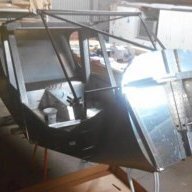Overview
About This Group
Group for Owners/Operators of Jabiru and Camit Aero Engines
- What's new in this group
-
billwoodmason joined the group
-
Bboylee joined the group
-
phantomphixer joined the group
-
johnm joined the group
-
Ethanol doesn't affect glass reinforced vinylester fuel tanks which is the only resin to use. This can not be said of glass reinforced polyester tanks. These are not recommended for any fuel type.
-
That's good, over here the last availabe Ethanol free fuel (Esso Super unleaded) started adding ethanol last september, hopefully you guys get to have the good stuff for a while yet.
-
A mate recently had 98 fuel dissolve his aviation grade thread sealant on his Sonex fuel fittings - fittings that survived for years using avgas and 95. the moment he used 98, all over red rover. God awful sticky shitty mess. (I don't have a Jabiru (plane) nor a glass tank, but great advice from RED.)
-
Premium unleaded Mogas (Shell Vortex 98 in our case) does not contain ethanol.
-
Just a reminder to confirm the compatability of your fuel system when using Mogas containing Ethanol, I believe some Jabirus have Fibreglass tanks
-
Engine was faltering at idle, trying to cut out. All this was there one day, and not the next. Took a while to solve. I had a mate look and he could see some black smoke when it was doing it. Same faltering at idle on base and final but a little throttle kept it going, I never had any fear it would stop, it was just annoying and I knew it was not right and had been perfect for the first 500 hrs and 17 years. In all that time I have never fiddled with the carby. If it aint broke, don't fix it. Mine is about same 15LPH fuel average. My plugs are always good color on avgas - I never looked when using mogas. Exhaust is grey with avgas, sooty black on mogas. Runs exactly the same.
-
Thanks 0032 (& everyone else who responded). Firstly we've determined it's running rich because of the sooty plugs (& also a sooty exhaust). The fuel consumption hasn't changed - historically 14.7 lph. The engine is operating normally - no problems at idle, cruise or WOT. Most of our flying is cross country of >1 hrs at 2850 - 2900 rpm, giving a TAS of 103Kts. Re your mechanical fuel pump - you determined it was flooding at idle because revs were not constant / surging?
-
Perhaps describe in detail how you have determined its running rich - and at idle, at cruise, full power, all of those? What are the symptoms you see? Just the plug color but no actual running problems?? I run avgas pretty much all the time, but when I did run 95ULP for about 2 years, the exhaust went sooty black real quick, can't say about the plugs, never needed to look. 2-3 years ago I had rich flooding at idle and it was nothing to do with the carb. Checked all that, spoke to a trusted carb expert. Carb float level perfect, and carb was not flooding "on the bench"- only in the plane when it was at idle. Faltering idle that would come and go. Reading through all of the jabiru manuals there were clues. Overhaul manual - "carb flooding - electric fuel pump giving too much pressure". I don't use the electric pump at all, so it could not be that. The mechanical pump though????? Overhaul manual describes fuel pump pushrod has a 0.10mm length tolerance. Why would the length change? It can't. "Effective length" can though: I determined this was the problem with the mech pump by bypassing it, just ran it on gravity feed. No rich, no flooding. Mech pump setup is (for mine at least) PUMP - GASKET - NYLON SPACER - GASKET - ENGINE. My gaskets had crushed down from about 0.70mm thickness each, to 0.36mm T each. I had lost 0.72mm of thickness total. Remember the 0.10 pushrod tolerance? It's set at that to give the correct fuel pressure I presume. I was way past that. It's just a stock quality automotive pump, nothing special. My fuel pump was effectively 0.72mmm CLOSER to the engine that it should have been, the pump was over pumping - too much pressure (for idle at least) (The pump lever has way more available travel than the pushrod can supply.) Made new gaskets from 0.70mm quality gasket card - PROBLEM SOLVED INSTANTLY - nothing to do with the carb. Why did the gaskets crush? Too much bolt checking? Shit gasket card? Both?
-
My Gen 3 has run Mogas since new. The plugs are always black after taxying back to the hangar. The insulator inside the plug is a lighter brownish colour. If you shut down after applying plenty of power they are probably a much lighter colour but that is virtually impossible to do so by the time you shut down they will be black. It isn't a problem, it is normal. The time to look at issues is when fuel consumption increases for no apparent reason.. The consumption of my Gen 3 3300A engine varies from 18 lph at about 95-100 knots low level at 2750-2800 rpm to 24 lph at 120 knots (130 knots TAS) at 8000 feet 2850-2900 rpm.
-
440032 joined the group
-
FYI we have had Gen 2,3,4 engines in our fleet and with the Gen 4 there was very little deposit wise when we switched to mogas. Our fleet of 5 jabs have run mogas exclusively for the las 3 years and it has been great, with no lead fouling on the valves every 300 hours
-
You will find that if you went back to avgas the plug colour would be ok again. Nothing is broken. i have done exactly the same as you when the SB came out. Mine was on a Gen 1 engine. I changed to mogas and found that it was too rich with the 245 main jet ( up from the 220 main) at the 2800 cruise rpm as it seemed “hard” sounding. so I split the difference and went with 235, perfect . I too went wth 13 mm pool depth as I physically checked a number of jabs and found that it was never close to the 10mm touted, with everyone running 12-13 mm. it still runs great on mogas but the plugs are still black. This has not been a problem with potential fouling and I change the plugs at 50 hours. Just for giggles I used a tank of avgas and found the plugs were ok deposit wise. Mogas is slightly denser than avgas and motorcycle racers used to drop one jet size to compensate. I too found this on my high hp z1000 Kwaka . Ken
-
Check your metering needle and seat for wear, they need replacing after a while. Worn needle & seat are causing richer mixture in the part-load range. On aircraft, you will find a worn spot where the piston/needle sit at cruise power. The needle should be a smooth "taper" all the way and the seat a round hole (worn seats are oval).
-
pluessy joined the group
-
I'd start with a carby clean / service and new o rings and adjustments as per Jab manuals. Then see how it performs.
-
Blueadventures joined the group
-
Our privately operated J160C (2200) has approx 610hrs over 17 years. Over the last 20hrs the engine has been running rich, as when removed the NGK spark plugs are a dense sooty black (prior to that they'd always been light tan). The only work / mods to the carby have been; in 2008 per JSB 018-1, Idle jet #35, Main jet #245 & Needle #290. In 2022 the diaphragm was replaced. Until about 20 hrs ago we used Avgas but since have changed to Shell Premium 98. The fuel level in the bowl is, as per the book, 13mm below the top of the bowl. Advice / suggestions please. Thanks, Bill
-
maccas joined the group
-
steve woods joined the group
-
justinjsinclair joined the group
-
Hi all I recently noticed a low CHT reading on No 1 Cyl in cruise. Engine is a Gen 3 2200 in my Jabiru J170D. The temps usually sit around 140deg on all Cyl but the last few flights No 1 Cyl is bouncing around between 95 and 105deg. I have checked the wire connection to the cylinder which looks intact, but haven’t gone any further at present. I have also been advised to put the probe into boiling water and check the gauge reading but haven’t had the chance yet. At this stage I am assuming maybe a broken or chafed wire between the gauge and the Cyl probe. The instrument is the MGL grey Bar type EGT/CHT display. Just asking if anybody else had this issue and the resolution.
-
Issue resolved. The coil was the only fault & the new one fixed it. The runup miss was due to about 30-40 engine starts to find the fault & no normal temp or RPM engine running. As mentioned the shutdown mag check was good after the first flight. Next flight was good. Runup no miss on either mag & smooth operation throughout the rpm range plus seemingly more power now.
-
Roscoe joined the group
-
I tried the cold cylinder procedure as advised by an old LAME by starting the engine on Mag 2 & found cylinder 6 cold. I thought I'd found the problem but after replacing the plug that cylinder wasn't a problem but the miss was still there. This was when it began to get confusing. I think there is/was more than 1 problem. The new coil has solved one of the issues, now I have to find whether the other is the distributor or HT lead/s.
-
At work to isolate a cylinder ignition problems on Lycons a spray of paint on the exhaust headers 5 cm from the head, run engine in defect mode, left or right mag etc . Have someone watch the paint start to burn off. Stop engine,the defective cylinder should be obvious as less burned, colder.
-
Thruster88 joined the group
-
My Gen3 3300A started running rough between about 2800 & 2950RPM & then after returning from a day at Tenterfield Mag 2 (RH MAG as seen from pilot seat had at least 1 cylinder misfiring. First I swapped out all 6 plugs one at a time with spares I had (used but going perfectly when replaced. I've got 36 of them). No change. Then I borrowed a lead tester & checked all leads. All checked out as good. Next I removed the distributor & it looked perfect but gave it a good clean & used some contact cleaner. Next started the engine, shut down Mag 1 & removed each plug lead 1 at a time. There was a RPM drop on each cylinder. Next got a new (genuine Honda) Coil from Jabiru & replaced the original (Honda knockoff) coil but still the problem existed. Mag 2 on runup 2000rpm had at least 1 cyliner misfiring. I took off & full power all good & the rough running was less noticeable but still there & full power S&L was 130 knots indicated at about 3200 running smoothly. On shutdown the idle mag check was good on both 1 & 2. The next thing I can do is swap distributor caps to eliminate that. My current thoughts are that I have a faulty HT lead or maybe 2 even though they all checked out using an HT lead tester. Anyone had anything similar of have any other ideas?
-
trailer joined the group
-

CHT sensor Temperature versus original below sparkplug thermocouple
Alan replied to Alan's topic in Jabiru Engines's Topics
Problem solved. My 12 channel MGL temperature monitor had been fitted incorrectly and was connected to the aircraft earth. The instructions clearly state the instrument should be earthed on the engine block. After correcting this my CHT temperatures all remain below 150°C and agree with the Jabiru original sensor fitted under #6 sparkplug. Finding this earlier could have saved me a lot of stuffing about with ducts and engine cowl flaps, to say nothing of an early complete engine re-build by Jabiru taking it to the latest Gen 3 spec ( After fitting the CHT monitoring I thought I had been over-heating my engine continuously - hence my caution). If you want something doing correctly - do it yourself comes to mind. Alan -
biggles joined the group
-
Keenaviator joined the group
-
Rustin joined the group
-
Bill joined the group
-
BrendAn joined the group
-
waraton joined the group
-
I have 12 channel temperature monitoring on my Jab 230C with the sensors fitted between the spark plugs on the heads. I was wondering whether there is any known calibration differences between these and the original Jabiru sensor ring fitted under a spark plug. On a hot day during climb out my between head CHT indication can rise up to 180°C, (although in reality I slow the climb to keep the temps down, max last flight was ambient 35°C, CHT =178°C). However, the original Jabiru spark plug senor is always well in the green? Alan
-
kiwiaviator joined the group
-
I hope it lasts as well as mine has. Never thought about the 2 way terminals but depending on location that is a handy feature.
-
Tried one of these in my J200 recently(after reading your post) as the odyssey battery couldn't cope with the winter cold starts... So far so good, with temps below 0 deg The Mottobatt starts it first go no problems.. Cost me $175 delivered. The two way terminals is a good feature too.


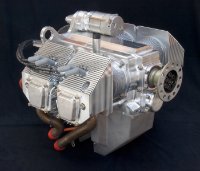


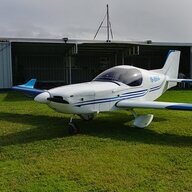


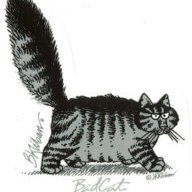


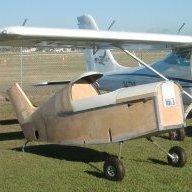
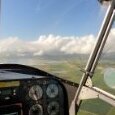
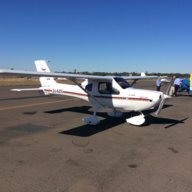

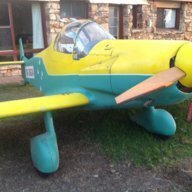
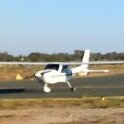


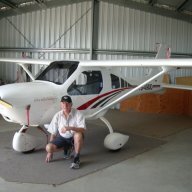
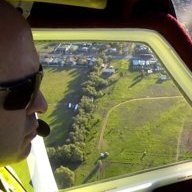
.thumb.jpg.b41fd63b3793495136dd756e97fa57de.jpg)
.thumb.jpg.e32fffada80555e7802d55dfda37080f.jpg)

